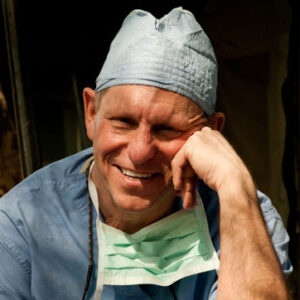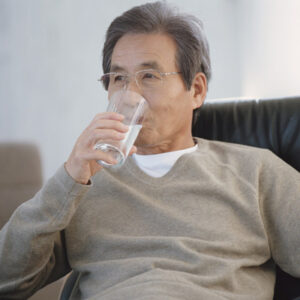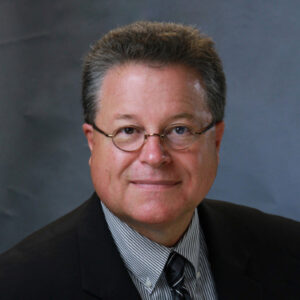Refractive
July 2021
by Liz Hillman
Editorial Co-Director
Though it has been available in the U.S. for a fraction of time compared to the well-established laser vision correction procedures PRK and LASIK, SMILE has quickly become the dominant procedure in the practices of many refractive surgeons.
John Doane, MD, said about 90% of his refractive practice is SMILE; D. Rex Hamilton, MD, said about 80%; and Dan Reinstein, MD, said about 75%.
Dr. Hamilton said the shift to SMILE in his refractive surgery patient population has been at his direction, for the most part. He performed the first SMILE cases on the West Coast in March 2017. With more recently approved (2018) indications for up to 3 D of astigmatic correction and better energy settings for faster visual recovery, he has been recommending SMILE to nearly all of his myopic patients for at least the last year and a half. Within the last 6 months, he’s had patients coming in asking for SMILE without his prior counseling.
“The SMILE procedure market share went up by about 60% from 2019 to 2020, from 3% to 7–8%. That’s a pretty significant improvement in 1 year, particularly in the face of everything going on,” Dr. Hamilton said.


Source: D. Rex Hamilton, MD
While refractive surgery in general has enjoyed a spike in the months since practices reopened after the COVID-19 pandemic shutdown, why the uptick in SMILE over the last few years?
In Dr. Hamilton’s view, it’s perceived as a safer procedure. There isn’t a flap and thus patients aren’t worried about flap-related complications. Although a flap dislocation is exceedingly rare, Dr. Hamilton says it is still a factor in the patient’s mind and a barrier to seeking refractive surgery. Even more influential is the dry eye factor, he said.
“There’s no question, and the literature supports, that the severity and duration of dry eye is significantly less. I tell patients 6–12 months of dryness with LASIK, 1–3 months with SMILE and of a lesser degree. [Dry eye is] one of the aspects of LASIK that keeps patients on the sidelines,” he said.
“At this point, more than 400 peer-reviewed articles have been published on SMILE, and overwhelmingly SMILE has shown advantages with regard to induction of dry eye or recovery of this symptom and biomechanical strength compared to LASIK,” Dr. Doane said. “SMILE has quicker healing and thus [more] patient acceptance than PRK.”
Dr. Reinstein said that any myopic eye, without the usual contraindications for refractive surgery, is a candidate for SMILE. The procedure is especially desirable for eyes that might be slightly dry, for those with large pupils, and/or for patients who play contact sports, he said.
From a surgeon standpoint, Dr. Hamilton said the initial slower recovery of SMILE compared to LASIK might have kept refractive surgeons from adopting the technology and technique when it was first approved. Newer energy settings make this a non-issue now, Dr. Hamilton said. He recently published an article comparing visual acuities and higher order aberrations of his LASIK and SMILE patients on postop day 1 and month 1.1 The study found visual acuities were equivalent on postop day 1 and month 1 between the procedures. It also showed less spherical aberration induction at month 1 with SMILE vs. LASIK.
“That was a big hurdle for SMILE to get over,” Dr. Hamilton said, noting how it used to take a week or longer for SMILE patients to reach 20/20 vision. “Now with the newer energy settings, we have less issues with inflammation postoperatively. Opaque bubble layer (the whitening of the cornea) is much less with the newer energy settings, and that translates to faster vision recovery.”
Dr. Hamilton called this the most important new development for SMILE. Another attractive feature, he continued, is its accuracy and predictability.
“If you talk to refractive surgeons around the world who do SMILE and LASIK, they will tell you that the enhancement rate with SMILE is one-third that of LASIK,” the latter of which already has a low enhancement rate. Dr. Doane also mentioned the lower enhancement rate experienced with SMILE.
The reason for this, Dr. Hamilton explained, could be that the tissue is not being exposed to the environment for a variable length of time as it is when the flap is lifted in LASIK and the treatment proceeds. A –9 D LASIK correction, for example, would result in the tissue being exposed for longer than a –1 D correction. In SMILE, however, the time the laser is firing to create the lenticule is the same regardless of the correction amount.
“The variability in terms of the depth of a femto laser cut primarily comes from the variability in the disposable interface with the eye. … With SMILE, because you’re doing two cuts with the same interface, any kind of variability subtracts out; that’s something that hasn’t been talked about much that is also contributing to the higher predictability of the procedure. I’m at a point now where if I have a patient with SMILE who is off and needs an enhancement, which is less than 1% of the time, it’s probably a function of the preoperative refraction,” Dr. Hamilton said.
One barrier to SMILE adoption from a surgeon standpoint is the need to purchase additional technology. The procedure currently approved in the U.S. uses the VisuMax laser platform (ReLEx SMILE, Carl Zeiss Meditec). Other companies are working on laser platforms that could perform SMILE procedures, though they’re not yet approved in the U.S. Once more devices to perform SMILE or lenticule extraction reach the U.S. market, Dr. Doane said the technique will achieve further validation in the refractive surgery field and even wider acceptance as a whole. Dr. Reinstein noted that one should expect a settling period with new devices.
“It took the VisuMax close to 5 years to reach clinical equivalency to LASIK from building and releasing the device itself,” Dr. Reinstein said. “Our textbook contains a road map for new companies to work from, which will shorten this time, but femto cutting is a delicate balance of parameters, and each laser is different.”
There are several parameter adjustments with the current SMILE procedure that are likely to come to the U.S. with FDA approval as well, Dr. Doane said. These include the ability to treat lower and higher amounts of astigmatism; the ability to treat lower myopic sphere (currently to treat astigmatism, at least –1 D of sphere needs to be corrected); and the ability to treat up to 2 D more sphere than the current 10 D. Dr. Reinstein said SMILE approval for hyperopia is in the near future, with the 12-month outcomes from his investigator-initiated trial conducted with Kishore Pradhan, MD, in Nepal published in 2019.2
About the physicians
John Doane, MD
Discover Vision Center
Kansas City, Missouri
D. Rex Hamilton, MD
Medical Director
Hamilton Eye Institute
Los Angeles, California
Dan Reinstein, MD
London Vision Clinic
London, U.K.
References
- Hamilton D, et al. Comparison of early visual outcomes after low-energy SMILE, high-energy SMILE, and LASIK for myopia and myopic astigmatism in the United States. J Cataract Refract Surg. 2021;47:18–26.
- Pradhan KR, et al. Small incision lenticule extraction (SMILE) for hyperopia: 12-month refractive and visual outcomes. J Refract Surg. 2019;35:442–450.
Relevant disclosures
Doane: Carl Zeiss Meditec
Hamilton: Carl Zeiss Meditec, Johnson & Johnson Vision
Reinstein: Carl Zeiss Meditec
Contact
Doane: jdoane@discovervision.com
Hamilton: rex@rexhamiltonmd.com
Reinstein: dzr@londonvisionclinic.com



